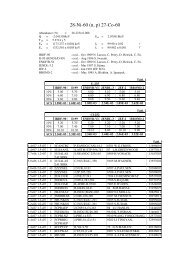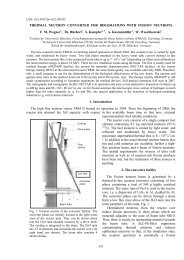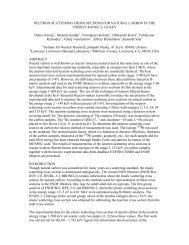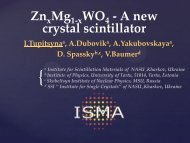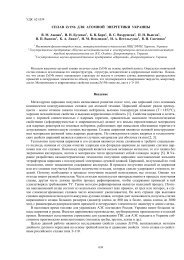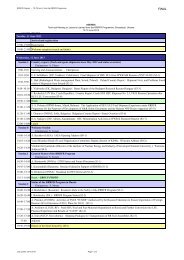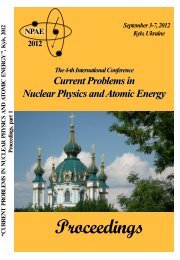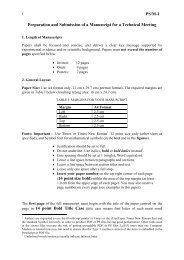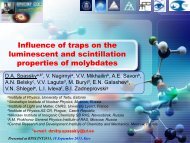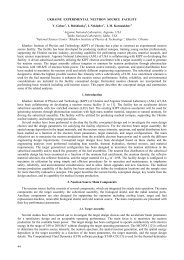International Reactor Dosimetry File 2002 - IAEA Publications
International Reactor Dosimetry File 2002 - IAEA Publications
International Reactor Dosimetry File 2002 - IAEA Publications
Create successful ePaper yourself
Turn your PDF publications into a flip-book with our unique Google optimized e-Paper software.
Burnup is defined as the nuclear transmutation of a given isotope, and the<br />
correction for the nuclear burnup of a stable target isotope is given by:<br />
where:<br />
B = [1 – exp(–sjt)] (II.4)<br />
B<br />
jt<br />
s<br />
t<br />
j<br />
is the burnup correction factor (i.e. the ratio of the measured reaction<br />
rate to the true reaction rate);<br />
is the neutron fluence for the irradiation;<br />
is the spectral averaged cross-section;<br />
is the irradiation time;<br />
is the total neutron flux.<br />
sj can be defined as the product of the activation cross-section and the<br />
neutron flux spectrum integrated over the entire neutron energy spectrum, and<br />
is also equal to the total activation rate in product atoms per target atoms per<br />
second that can be calculated from reactor dosimetry activation measurements.<br />
Prior to neutron spectral adjustment, measured activation data are converted<br />
to these saturated activation rates. Equation (II.4) may be applied in order to<br />
determine if a burnup correction may be required for a specific reaction.<br />
However, if the burnup is significant, the measured reaction rate will be much<br />
lower than the true reaction rate as implied in Eq. (II.4). Furthermore, the<br />
possibility of burnup of the product atoms has to be considered, which may well<br />
be at a higher rate than that of the target atoms. The more general form of the<br />
burnup equation (which also takes into account the decay of the product atom)<br />
is given by:<br />
where:<br />
B = l[exp(–s a jt) – exp(–s b jt)]/[(l + s b j – s a j)(1 – exp(–lt))] (II.5)<br />
B is the ratio of the measured reaction rate to the true reaction rate;<br />
s a and s b are the spectral averaged cross-sections for the target and product<br />
atom, respectively;<br />
l is the decay constant for the product isotope.<br />
As noted above, this equation requires that the true reaction rates be<br />
known, whereas only a measured reaction rate for the target reaction may be<br />
known. This problem can be easily solved by applying an iterative procedure.<br />
Given a measured and uncorrected reaction rate for the target isotope, the<br />
113



